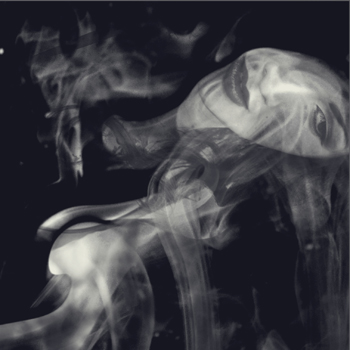This story is hilarious! The first time I read it, I kept finding myself laughing out loud. How did you manage to do that, would you say? And also, what exactly does humor have to do with any of this?
Right before I closed my eyes and clicked dear Smokelong‘s submit button, I’d happened to close the browser that had McSweeney’s open. While I was sure it read hilariously, I wasn’t sure at all how one would read it as a whole and take it. So, I’m super glad to hear that.
This was how this piece came to be: I once wrote down a sort of sudden manifesto, which was an exposition of a notebook entry from a year before that. Addressed to a fictitious artist, it was a drop-down list of what I’d expect from the artist. It also dared the artist to create what I did not want to see. That was around two years ago. “On Conplexity” is one way of making sense of the “mess of a work” that would have followed, albeit from a more mature yet whimsically skeptical perspective that cannot come to grips with such an artistic onslaught. And finally, in the absence of humor, wouldn’t all of this prove a weeny bit gloomy?
What is your relationship to criticism or critical theory? Do you think you could classify this story as criticism? Is criticism absurd?
By way of postmodernism, simply as a curious reader, curiouser would be the word … and theory unexpectedly led me—blame it on hyperlinks—to un-mainstream Indian thought, so, I owe it a little to critical theory for somehow whirling it all full circle.
The story is criticism insofar as observation is criticism. The function of “criticism” is to open as many doors and windows as possible, and when a writer has footing in multiple planes, it can be perplexing and/or absurd. That, again, would depend on what a reader comes equipped with.
Who is Meera Joy? Does the name have any particular significance to the story or was it picked more at random? Would any other name have worked in the story?
She’s a collective of, if not individuals, personalities who are, or rather, who is a) “multifocal,” b) fluid and … c) incomplete, if I may, like the rest of us; hence her shifting and mischief. The name happened like a rapturous epiphany, and with that the rest fell into place like clockwork, so Meera Joy is Conplexity.
What’s the benefit of the misspellings in this story? What about the scrambled grammar and/or syntax? It seems to destabilize the story in an essential way, but I’m not sure what that essence is, exactly. What would you say the function of those things is?
Most misspellings here are verbatim from Conflexity, you can call it mernaculariztion, and few are a “sendoff” to theory, so they are there for pure rumination and delight. The syntax here reflects, perhaps, the piece’s pseudo-uncertainty. It’s not sure if it wants to be … (I don’t know), which it doesn’t want to be anyway, and it’s not even sure if it wants to be …(I don’t know). It just wants to exist … with all its illusory closures and internal inconsistencies … just be out there.
What I really like about this piece is how it makes me ask, How is this a story? What about this piece allows you to qualify it as a story?
A smoke long, that is, a flash, can be a not-so-much story. It can be anything, well, so long as it contains some sort of form and/or content. Its economy of space, its so-called lack, might as well be its legitimate subject. “On Conplexity,” all the while hinting at open beginning and ending, hinting even at missing middle, it is very much a self-contained story. Its sub-device just happens to be what one would call orgasnized [sic] scattershoot [sic].
What other kinds of things are you working on?
Days ago something askew struck me. I wrote down, in half hour, a tortuous sentence. When it sinks in I will get back to it.



 The SmokeLong Grand Micro Contest (The Mikey) is now an annual competition celebrating and compensating the best micro fiction and nonfiction online.
The SmokeLong Grand Micro Contest (The Mikey) is now an annual competition celebrating and compensating the best micro fiction and nonfiction online.